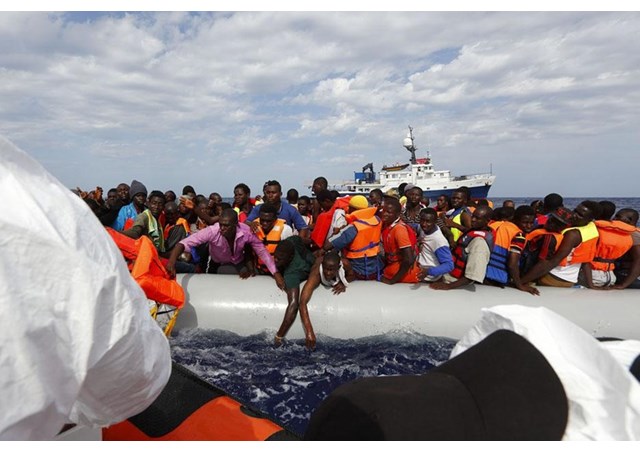
Order of Malta launches mission to save migrants in Aegean Sea

(Vatican Radio) Over one million refugees and migrants have reached Europe by sea since the start of 2015.
A report released on Wednesday by the United Nations refugee agency more than 80% of them arrived in Greece, with the majority landing on the island of Lesbos.
They made the crossing from nearby Turkey. Most of the others crossed the Mediterranean from Libya to Italy.
The eastern Mediterranean route continues to see the largest increase in the flow of forced migrants and refugees from Syria, Iraq, Afghanistan and Somalia.
But although the crossing is relatively short, it is perilous and as the winter months descend the death rate amongst the migrants continues to climb.
In response, the Italian Aid Corps of the Order of Malta (CISOM) has launched a new humanitarian mission on board a Migrant Offshore Aid Station (MOAS) in collaboration with Greek coastguards.
Every day, thanks to funding, resources and professionals provided by CISOM, medics and rescue divers pluck vulnerable people travelling in rubber dinghies from icy waters and provide them with assistance.
Vatican Radio’s Linda Bordoni spoke with Doctor Giada Bellanca, one of the medics on board MOAS and asked her about ongoing search and rescue operations.
Doctor Bellanca explains that although Lesbos is Greek territory it is very close to Turkey and is logistically neuralgic as many migrants have chosen to flee Syria through this eastern Mediterranean route.
The crossing from Turkey to Greece, she says, is very short but it is also very dangerous.
Bellanca explains that aboard the MOAS every day, together with a team made up of medical doctors, nurses, rescue divers and volunteers, she patrols the waters between the eastern Greek islands and Turkey, ready to pluck migrants in distress from the sea.
She says the typical vessels used by the migrants in the Aegean Sea are rubber dinghies that can carry from 20 to 60 people.
“Imagine a lot of little boats in the sea, so we have to look out for many small targets every day” she says.
Bellanca explains that in a sea such as the Aegean that is a “closed sea” there are abrupt changes in weather conditions and there can be very big waves.
Often from the harbor, she says, the water appears calm and this encourages the migrants to set out on their journeys. But weather conditions change quickly and especially now in winter, she and her team mates have often to deal with deep hypothermia and related problems because many refugees are not practical with swimming.
She says in the boats there are a lot of children and pregnant women because “Syrians move with the whole family, so it really is a humanitarian disaster because of the presence of so many vulnerable people and this makes it very difficult psychologically sometimes”.
Bellanca says the migrants they rescue come from Syria, Iraq, and Palestine and there are also a lot of Kurds.
She explains that for the rescue itself MOAS operates a search-and-rescue mother ship and two high-speed rescue craft.
“We arrive with two professional rescue divers who are ready to go into the sea in every condition and pluck from the waters people in need” she says.
Afterwards Bellanca and the nurse who assists her, Antonella La Licata, are able to provide immediate medical assistance to migrants on board the mother ship.
Bellanca, whose field as a doctor is disaster and combat medicine and who has already worked in similar contests within the “Mare Nostrum” and “Frontex” Operations patrolling the waters between Libya and Lampedusa, describes her experience with migrants as immensely rewarding.
“What I give is always less than what I receive and what I learn” she says.
“The dignity of these people allows me to grow in my work and in my life. The dignity of the women and the smiles of the children, the stories of our colleagues - medics from Syria, professionals from Palestine, people who have lost everything but continue to dream - give us more and more and more” Bellanca says.
“That’s why we continue to do this, and this is the force behind CISOM. This is our mission”.
For more information on CISOM click here.
| All the contents on this site are copyrighted ©. |


